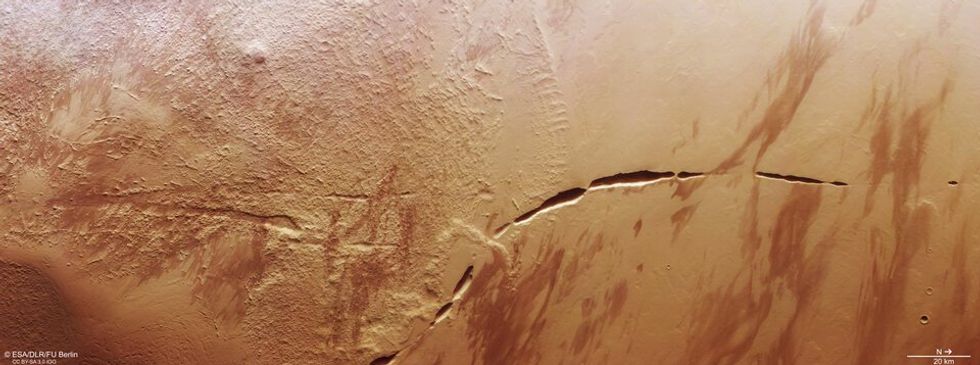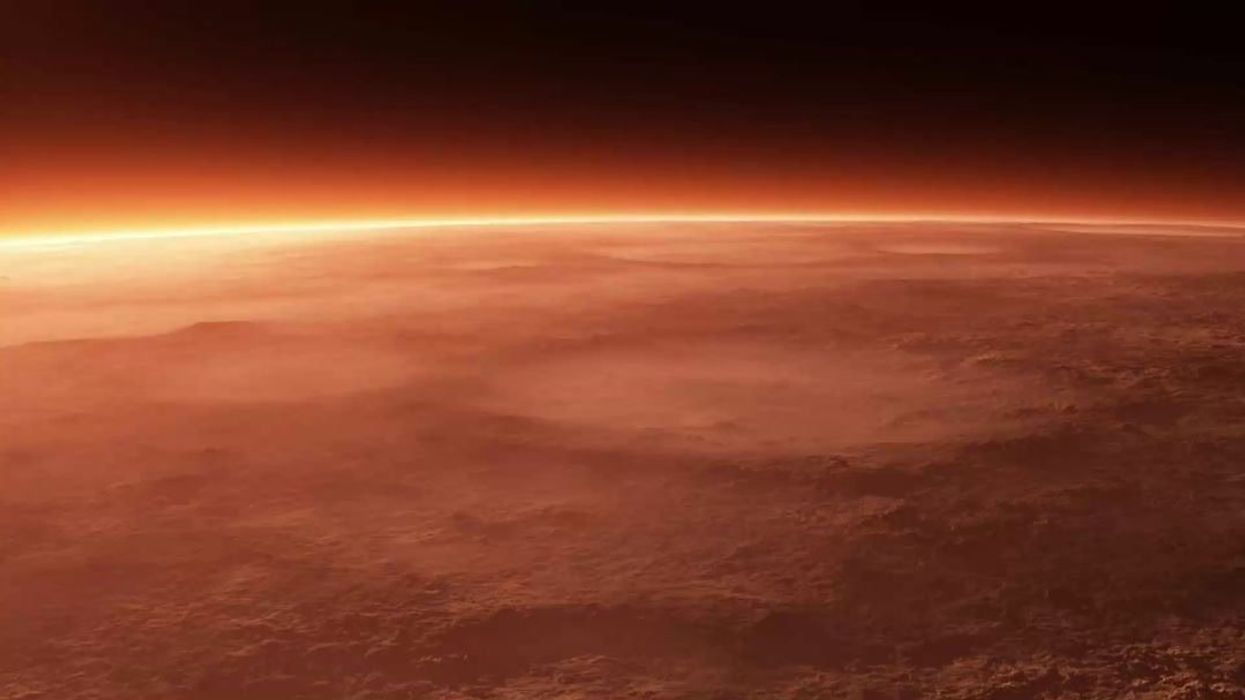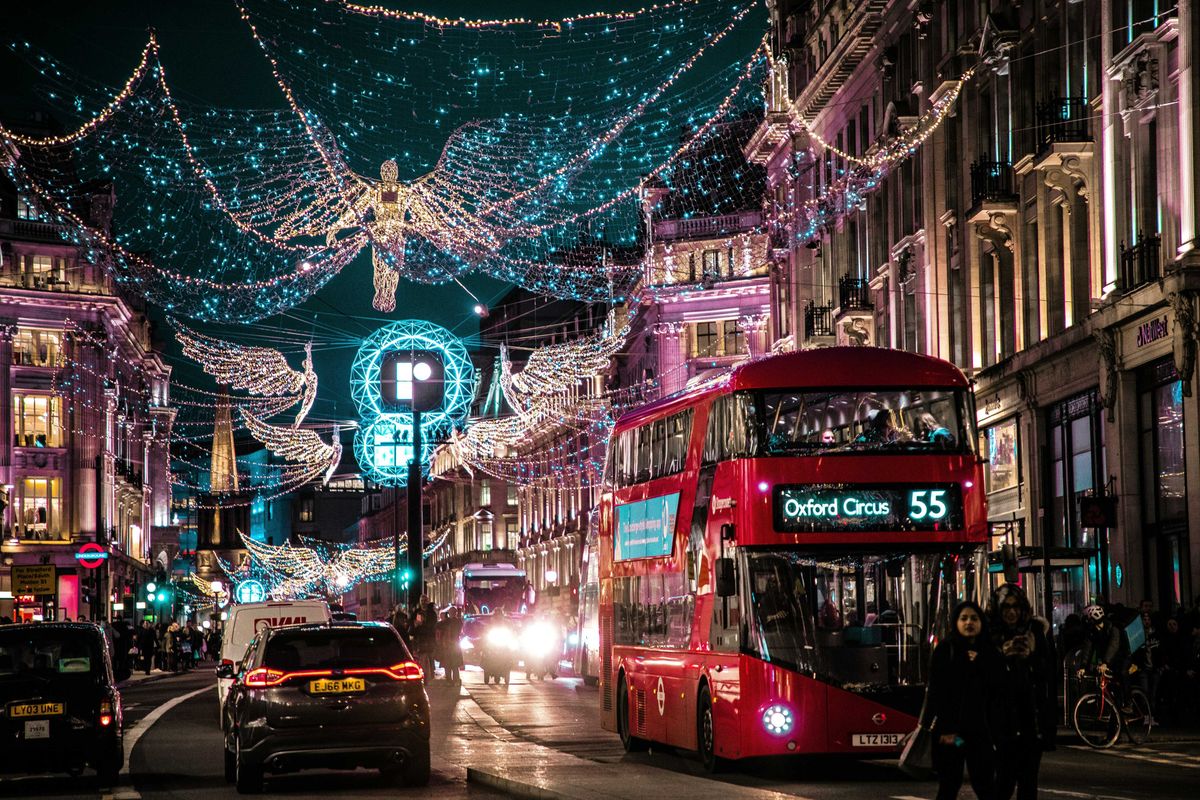Jake Brigstock
Jul 08, 2024
This Major Discovery Just Made Colonizing Mars a Lot More Feasible
Underknown - INSH / VideoElephant
A scar has been spotted on Mars that's bigger in size than the Grand Canyon, according to the European Space Agency (ESA).
Called Aganippe Fossa, the 600km-long scar is dark and uneven; it slices through the marbled ground at the bottom of a volcano.
The volcano that it cuts across is one of the planet's largest, Arsia Mons, which is 435km in diameter and rises more than 9km above its surroundings.
To put that into perspective, the highest dormant valance on Earth, which is Ojos del Salado on the Argentina-Chile border, is 7km above its surrounding plains.
Several of Mars' largest volcanoes are found in this region called Tharsis, including Olympus Mons, the tallest known volcano in our solar system.
The ESA said: "We're still unsure of how and when Aganippe Fossa came to be but it seems likely that it was formed as magma rising underneath the colossal mass of the Tharsis volcanoes caused Mars' crust to stretch and crack."

Mars Express, which has been orbiting the planet since 2003 imaging the planet's surface, has revealed a number of things since it was put into orbit, including the image above.
It shows two different kinds of terrain, which are hummocky terrain which has irregularly shaped mounds and valleys clustered together and lobate terrain which is made of rocky debris and gentle cliffs.
The ESA added: "These terrains are characteristic of Arsia Mons' ring-shaped 'aureole', a 100,000-square-kilometre disc around the base of the volcano, possibly associated with ancient glaciers. Intriguingly, this aureole has only built up on the northwestern flank of the volcano, likely due to prevailing winds from the opposite direction controlling where ice settled over time.
"Windblown dust and sand have also shaped this patch of Mars, creating interesting zebra-like patterns to the right of the frame as darker material is deposited on lighter ground (or vice versa!). The surface here also shows evidence of lava flows, dating from when the volcano was active."
How to join the indy100's free WhatsApp channel
Sign up to our free indy100 weekly newsletter
Have your say in our news democracy. Click the upvote icon at the top of the page to help raise this article through the indy100 rankings.
Top 100
The Conversation (0)














